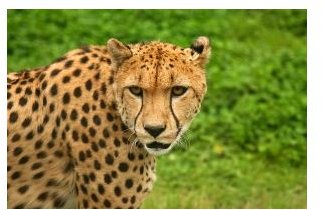Types of Wild Cats
Types
You can classify wild cats in several ways. Wild cats can be grouped as small or large cats. Small cats include the ocelet and margay. Large cats are perhaps the more familiar predators such as the tiger, lion, and leopard. These cats have a basic difference in their physical structure and thus communication strategies. Generally, small cats can purr where as large cats can roar, according to the Library of Congress. The cheetah is an exception among the large cats and certainly not the only anomaly of this species.
Wild cats can also be classified in terms of their hunting techniques. Cats such as leopards rely on stealth to sneak up upon their prey for the attack. A 2010 study published in the Proceedings of the Royal Society of Biological Sciences postulates that the leopard evolved into its dappled spotted pattern as a form of camouflage as a response to its habitat and to increase its hunting success.
Habitat
Most types of wild cats are found on one continent. Others such as the lynx are found in both North America and Eurasia. The specific habitat means that some wild cats may exhibit specializations which show the refined adaptation to specific challenges a particular species may face.
The cheetah is an anomaly among wild cats. It is the only representative of its genus. The species has demonstrated a remarkable recovery when decimation of the cat populations led to what is referred to as a genetic bottleneck, explains the International Society for Endangered Cats.
Species genetic health depends upon the genetic variability within a population. The more members of a species, the more possibilities exist for mutations of genes which can reveal characteristics which increase a species survival rate.
Cheetahs are known as the fastest land mammal. This trait makes them a formidable predator against the gazelle and impala. Curiously, the coat of the cheetah is spotted, differing from lions which also occupy a similar habitat but are tan in color.
Specialization
The cheetah’s preference of prey shows another interesting characteristic of wild cats—the preference for prey based on size. Cheetahs prefer prey up to about 90 pounds. The preferences reflect a balance between energy expended versus energy gained. Survival for wild cats depends upon getting more energy from their food than they expend trying and succeeding to get prey.
For cheetahs or lions even to prey on smaller prey represents a waste of energy. In relation to the hunting success rate, the smaller payoff of other prey does not present an ecological advantage to these wild cats. Life as a predator is not easy. Hunting success rates can be low, 20 percent or lower depending upon the species. Hunting takes a lot of energy. In order to survive, a predator must get more energy from its diet than it expends trying to find food.
Some types of wild cats remain unknown, even mysterious. This is in part due to their nocturnal nature. Wild cats take advantage of the quiet hours of the night to find food and carry out other life processes. Cats such as the fishing cat inhabit environments such as marshes and swamps which are difficult to explore. Other cats such as the cougar, lion, and tiger evoke fear due to their occasional predation of humans.
The fascinating aspect of wild cats remains people’s own connection with a bit of the wild in domestic cats. In many ways, domestic cat behavior resembles that of its wild counterparts. For the African and European wildcat, the domestic cat represents a threat to their survival due to hybridization with domestic cats.
Wild cats are examples of highly refined adaptation and evolution within the animal kingdom. Specializations with hunting techniques and physical structure show the differences between the cat species. To learn about the specific ecological forces at work in an area, you have only to examine the ecology of wild cats to learn how nature responds to its environment.
References
W. Allen et al. Why the leopard got its spots: relating pattern development to ecology in felids. Proceedings of the Royal Society of Biological Sciences, October 2010; doi: 10.1098/rspb.2010.1734.
Library of Congress: Why and how do cats purr? – www.loc.gov
International Society for Endangered Cats: Small Wild Cat Conservation – www.wildcatconservation.org
